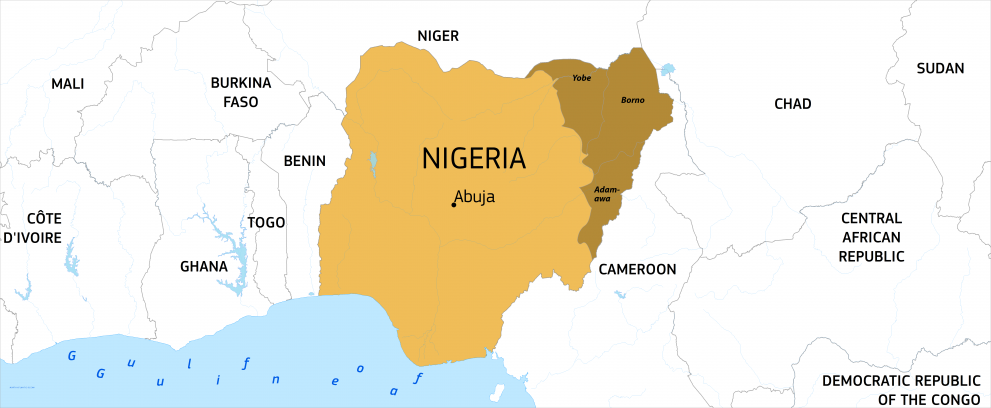Introduction
In North-East Nigeria, 7.9 million people require humanitarian aid. According to the latest Cadre Harmonisé projections, 4.8 million people in the North-East could struggle to find enough food during the lean season (June-August 2024) without humanitarian assistance, which is 14% higher than a year ago.
According to the United Nations, the conflict in the North-East has already claimed more than 600,000 lives up to 2021 and some 17,139 more between 2021 and 2023. Violence has led to widespread forced displacement and acute violations of human rights and international humanitarian law.
More than 4 million people have been displaced since the onset of the crisis, with 63% for five years or more.
What are the needs?
There are various components to the crisis in Nigeria: (i) insurgency in the North-East, (ii) surging banditry violence in the North-West, (iii) incessant inter-community conflict in the Middle Belt, and (iv) a growing Cameroonian refugee population in the South.
More than 14 years of conflict between non-state armed groups and government forces in Borno, Adamawa and Yobe states in the North-East has resulted in acute humanitarian needs:
- 2.3 million people displaced internally and more than 382,000 in neighbouring countries – the majority living in makeshift settlements or highly-congested camps, relying mostly on local communities, authorities, and humanitarian organizations.
- disturbing levels of food insecurity with a risk of famine in some areas and worsening nutrition situation.
- Due to the hostilities and access constraints, aid workers cannot reach an estimated 1 million people in the North-East. These issues hinder the delivery of life-saving assistance, crucial in view of the alarming levels of food insecurity.
The North-West is plagued by growing insecurity caused by a combination of community violence, herders-farmers clashes and attacks from criminal groups and armed bandits. This has resulted in a dire humanitarian situation with over 600,000 people displaced and alarming levels of food insecurity and life-threatening malnutrition among children.
Humanitarian workers continue risking their lives to deliver aid to those in need. In 2019, 12 humanitarian workers were executed by non-state armed groups and 4 others were killed in 2020, with frequent security incidents against humanitarians. In 2023, 1 humanitarian worker was abducted and killed, and 5 others were abducted.

How are we helping?
The EU is one of the leading contributors of humanitarian aid in Nigeria. In 2023, the EU has allocated € 47.4 million in humanitarian aid.
Since 2014, the EU has provided close to €482 million to help people in need in the country, including €31.5 million in 2024.
Part of EU humanitarian funding is used to address food insecurity. We provide immediate assistance to cover the basic needs of the most vulnerable internally displaced people and host communities in the country. The EU also supports refugees in other countries affected by the conflict in Nigeria, namely Cameroon (Far North region), Chad (Lake region), and Niger (Diffa region).
EU humanitarian aid in Nigeria helps to meet the basic needs of the conflict-affected people by supporting emergency food aid, shelter, access to clean water, sanitation and hygiene, basic primary healthcare, protection and education.
The EU currently funds food assistance in the form of cash transfers, vouchers, and food rations for families, ready-to-use therapeutic food, and essential medicines to treat severely malnourished children.
To facilitate humanitarian access to people in need, the EU supports the United Nations Humanitarian Air Service (UNHAS) which enables aid workers to reach isolated areas.
Given the special protection needs of women and children that arise in conflict situations, apposite community-based services receive EU funding. The aim is to:
- provide the necessary psychosocial support and referral services to unaccompanied children and victims of gender-based violence
- help former child soldiers released from armed groups to reintegrate into society.
Among the EU-funded actions are also projects that give children trapped in humanitarian crises a basic education alongside essential school supplies.
The EU is supporting preparedness initiatives in disaster-prone areas in Nigeria. These help vulnerable people better prepare for and reduce the impact of recurring natural hazards, such as epidemics and floods. Through these projects, communities receive essential information about risks and prevention. This strengthens the local response through planning and preventive actions.
Beyond trying to meet immediate humanitarian needs, joint efforts with development partners are required to help build long-term resilience. Nigeria is an EU pilot country for projects bringing together humanitarian, development, and peace-building dimensions to address the needs of vulnerable people and offer them social protection through a more long-term and holistic approach.
Through its development assistance, the EU aims to build long-term resilience in conflict-affected communities by addressing the underlying causes of violent conflict, supporting basic services, and helping people to support themselves.
Last updated: 28/05/2024
Facts & figures
7.9 million people need humanitarian assistance in North-East Nigeria (UNOCHA)
2.3 million forcibly displaced and 2 million returnees in North-East Nigeria (IOM)
31.8 million people across Nigeria with insufficient food availability during the lean season (Cadre Harmonisé), 4.8 million of which in the North-East and 6.6 million in the North-West
1 million children expected to suffer from severe acute malnutrition.
EU humanitarian funding:
€31.5 million in 2024
€47.4 million in 2023
€482 million since 2014

